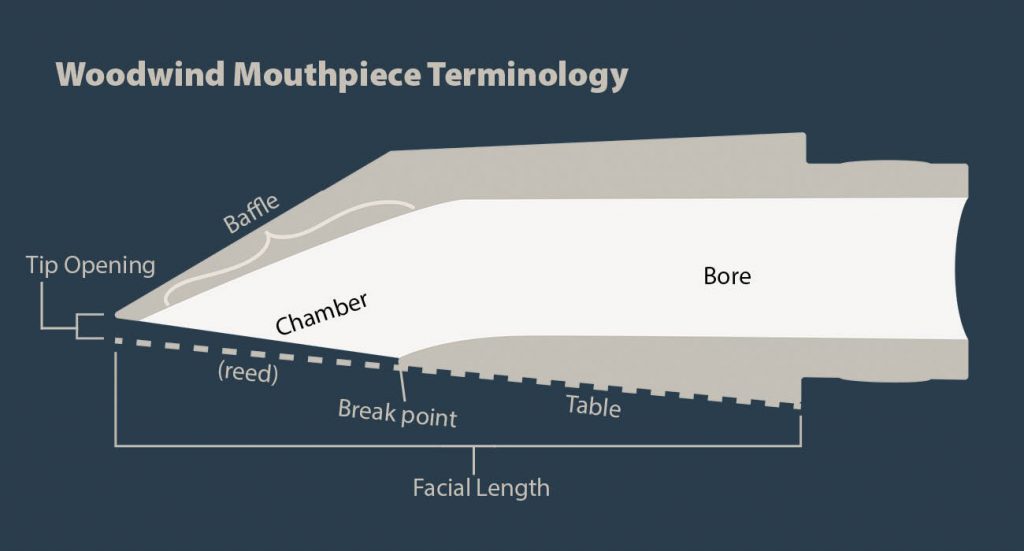Woodwind Mouthpieces Explained

Woodwind mouthpieces have several crucial parts that work together with the reed to produce the sound from your instrument. Read on to learn about the various parts and how they might effect your choice of reeds!
The reed sits flush onto the table of the mouthpiece. The reed separates from the table at the breaking point where the facing curve starts to take its shape. The facing curve is where we get our tip opening for our mouthpiece. The tip opening is the distance between the reed and the tip of the mouthpiece. This is typically what will decide the strength of reed that you use.
The next crucial part of the mouthpiece is the baffle and chamber. In my opinion the baffle and chamber is where the majority of your sound can change from mouthpiece to mouthpiece. The baffle typically determines how bright or dark a mouthpiece can be. The bigger the baffle the brighter the sound. The smaller the baffle the warmer the sound. The chamber is responsible for focused the sound is. The larger the chamber the more opened and free blowing the mouthpiece will be. The smaller the chamber the more focused and compact the mouthpiece will be. The medium chamber is most common as it is a middle ground for the two extremes.
The last part of the mouthpiece is the bore. The bore is responsible for connecting the mouthpiece to the neck of the instrument. It does not have much of an impact on the sound of the instrument.

No Comments